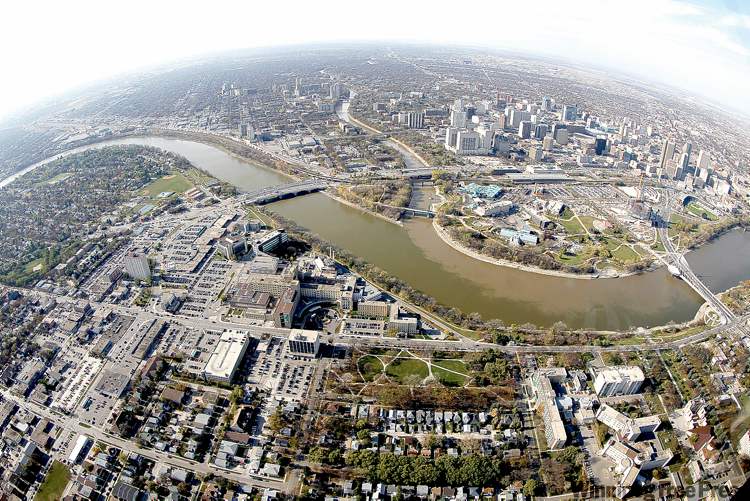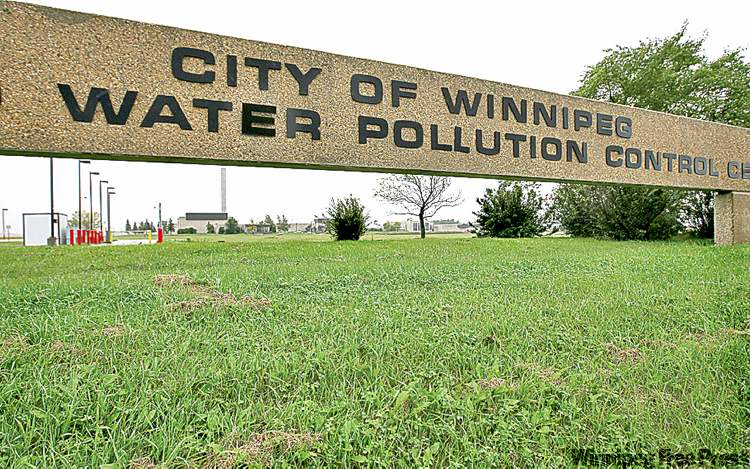Half-treated sewage into Red
Problem with bacteria hampers waste-treatment plant
Advertisement
Read this article for free:
or
Already have an account? Log in here »
To continue reading, please subscribe:
Monthly Digital Subscription
$1 per week for 24 weeks*
- Enjoy unlimited reading on winnipegfreepress.com
- Read the E-Edition, our digital replica newspaper
- Access News Break, our award-winning app
- Play interactive puzzles
*Billed as $4.00 plus GST every four weeks. After 24 weeks, price increases to the regular rate of $19.00 plus GST every four weeks. Offer available to new and qualified returning subscribers only. Cancel any time.
Monthly Digital Subscription
$4.75/week*
- Enjoy unlimited reading on winnipegfreepress.com
- Read the E-Edition, our digital replica newspaper
- Access News Break, our award-winning app
- Play interactive puzzles
*Billed as $19 plus GST every four weeks. Cancel any time.
To continue reading, please subscribe:
Add Free Press access to your Brandon Sun subscription for only an additional
$1 for the first 4 weeks*
*Your next subscription payment will increase by $1.00 and you will be charged $16.99 plus GST for four weeks. After four weeks, your payment will increase to $23.99 plus GST every four weeks.
Read unlimited articles for free today:
or
Already have an account? Log in here »
Hey there, time traveller!
This article was published 03/11/2011 (5091 days ago), so information in it may no longer be current.
On the mean streets of Winnipeg, even the bacteria aren’t safe.
Waste-water experts from across the continent have been called in to help the city investigate the mysterious death of millions of micro-organisms responsible for digesting organic waste at the South End Water Pollution Control Centre, which treats one-quarter of the city’s raw sewage.
One possible culprit is the illegal dumping of toxic waste.

Since Oct. 7, the plant has been discharging 50 million to 60 million litres of half-treated sewage into the Red River every day, city officials disclosed Wednesday, 24 days after officials first noticed the problem.
The plant is only capable of partly treating the sewage because a mix of beneficial micro-organisms — mainly bacteria, protozoans and rotifers — which are supposed to digest tiny particles of toilet paper, feces and algae have died off. Meanwhile, unhelpful bacteria that actually stymie the sewage-treatment process have grown in their place.
“We don’t know what’s killing off the good bacteria,” said Kelly Kjartanson, environmental standards manager for the city’s water and waste department, whose South End plant is now in violation of its provincial sewage-treatment licence.
The 24-day biological-treatment malfunction has led the plant to discharge too many suspended particles of solid waste, too much material that can suck oxygen from the Red River and too much fecal coliform bacteria.
While fish in the river remain safe, fecal coliform counts in the Red River now exceed the recommended level for swimming. Officials are even urging anyone who comes into contact with river water to wash their hands.
“Full-body contact, immersion, would not be recommended,” said Mike Shkolny, water and waste’s engineering manager. “However at this point in time, due to our weather and climate, there’s not much recreation going on, so the risk to public health, whether it’s boating or water-skiing, is very small.”
Shkolny, who has served the city for decades and is slated to retire later this month, said Winnipeg has never experienced a problem with biological treatment at any of its three sewage plants. Biological treatment is one of four stages of sewage treatment at the South End plant, which was built in 1974 and upgraded in the 1990s.
Sewage that enters the South End plant is first screened for trash and grit, then cleared of grease and sludge in a clarifier. Partly treated sewage then enters aeration tanks where beneficial bugs digest remaining particles of solid waste before the sewage passes through an ultraviolet-radiation disinfection chamber.
As a result of the micro-organisms failing to digest most of the suspended particles of organic waste, ultraviolet disinfection isn’t working optimally, either. Workers at the plant first noticed the problems on Oct. 7 and have been trying to restore the balance of beneficial micro-organisms ever since.
“We expected it was going to recover but it has not, so we are working hard to try to reinvigorate the environmental growth,” Shkolny said.
But infusions of healthy bacteria from properly functioning aeration tanks at the city’s North End sewage-treatment plant have yet to restore the right balance of micro-organisms in the South End facility.
This has led the city to ask for help from experts within the city and beyond. It is also trying to determine whether pesticides or heavy metals dumped illegally into city sewers could have killed off the beneficial bugs. The results of preliminary tests for toxic chemicals are due within days.
“We may know a little more toward the end of this week or the beginning of next week as to whether there was something untoward dumped into the system,” Shkolny said.
Even if the cause of the problem is identified, it may be a month or more before the plant begins functioning properly, he added.

The city has spent approximately $100,000 so far to identify the source of the problem and will spare no expense to solve it, said Bill Borlase, the city’s waste-water services manager, who is also slated to retire later this month.
Engineers have witnessed “small glitches from time to time” in the biological treatment but have never encountered a problem on this scale, Borlase said.
Shkolny said it’s possible the city could face provincial fines for exceeding limits set for the discharge of fecal bacteria, suspended solids and oxygen-depleting materials.
“We don’t think we’ve done anything wrong relative to how we’ve run the plant. There is some external factor or influence that has caused this disruption,” he said.
Once the cause of the problem is identified, water and waste officials have been asked by Winnipeg’s chief administrative officer to review their operations to ensure the discharge does not happen again.
One city official, speaking on the condition of anonymity, said the 24-day delay in disclosing the sewage issue to the public stemmed from the complexity of the problem.
“As you know, this involves a biological-process disruption and is not as simple as repairing a broken pipe,” the official said. “We’ve been assured that this matter is not a cause for public-health concern.”
The city has found no malfunctions with any equipment or machinery at the South End plant, unlike in 2002, when a complete failure at the North End Water Pollution Control Centre led untreated sewage to pour into the Red River for 57 hours.
“While this has persisted for a longer time frame, we are at least getting partial treatment,” said Shkolny, adding he is not certain any member of the public would be able to notice any effect on fish or in terms of debris in the river.
bartley.kives@freepress.mb.ca

